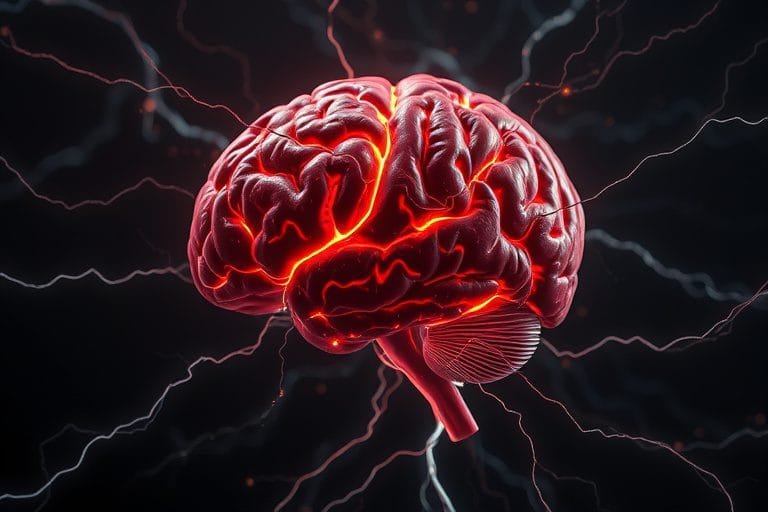Post-Traumatic Stress Disorder (PTSD) is not just an emotional condition—it also causes real, physical changes in the brain. Understanding how PTSD affects the brain can help explain why symptoms like flashbacks, anxiety, or emotional numbness occur.
In this article, we’ll explore the key brain regions affected by trauma, how they respond, and what science tells us about the healing process.

What Is PTSD?
PTSD is a mental health condition triggered by a traumatic event. This can include anything from military combat and assault to childhood abuse, natural disasters, or serious accidents.
While PTSD is often viewed as an emotional disorder, research shows it has strong neurological roots. In other words, trauma doesn’t just leave a psychological scar—it leaves a physical imprint on the brain.
According to the National Institute of Mental Health (NIMH), about 5% of adults in the U.S. experience PTSD in any given year, and women are twice as likely to develop it as men [1].
The Brain’s Response to Trauma
When a traumatic event occurs, the brain shifts into survival mode. This involves a rapid activation of the fight-or-flight response, controlled by a complex interaction between different brain regions.
Over time, if the trauma is not fully processed, these regions can become “stuck” in alert mode, leading to the symptoms of PTSD.
Let’s break down the three main areas of the brain affected:
1. The Amygdala: The Brain’s Alarm System
The amygdala is a small, almond-shaped structure deep in the brain. It’s responsible for detecting threats and triggering fear or panic.
In people with PTSD, the amygdala becomes overactive, constantly scanning for danger—even when there’s none.
What this looks like:
– Startling easily at loud noises
– Feeling constantly on edge or hyper-alert
– Intense emotional reactions to reminders of the trauma
📊 A study published in Biological Psychiatry found that people with PTSD showed significantly higher amygdala activity when exposed to threatening images compared to those without PTSD [2].
2. The Hippocampus: The Memory Center
The hippocampus plays a key role in storing and organizing memories—especially the “context” of those memories (like time, place, and sequence of events).
Trauma can cause the hippocampus to shrink in size and function less effectively. This makes it hard for the brain to distinguish between the past and present, which is why trauma survivors often feel like the event is happening “all over again.”
What this looks like:
– Flashbacks
– Nightmares
– Confusion about what’s real and what’s memory
📊 According to a 2006 study in The Journal of Neuroscience, people with PTSD had a smaller hippocampus volume compared to people without PTSD [3].
3. The Prefrontal Cortex: The Rational Thinker
The prefrontal cortex, located at the front of the brain, is responsible for decision-making, emotional regulation, and impulse control.
In PTSD, this area becomes underactive, especially when the amygdala is fired up. That means the brain’s ability to calm itself down is weakened.
What this looks like:
– Difficulty concentrating
– Trouble calming down after being triggered
– Struggles with controlling anger or anxiety
📊 Functional MRI scans show that the prefrontal cortex “goes offline” during emotional flashbacks in people with PTSD, reducing logical thinking and increasing emotional reactivity [4].
How These Changes Affect Daily Life
These neurological shifts explain many of the challenges faced by individuals with PTSD:
– Overreactions to non-threatening situations (due to amygdala hyperactivity)
– Persistent fear or panic (because the brain still thinks the danger is present)
– Poor memory or disorganized thoughts (because the hippocampus struggles to process trauma)
– Difficulty thinking clearly under stress (because the prefrontal cortex is offline)
Understanding this can help survivors and their loved ones stop blaming themselves and realize that PTSD is not a weakness—it’s a brain-based injury that requires care and healing.
Can the Brain Heal from PTSD?
Yes, it can.
While trauma changes the brain, healing can also reshape it—a concept known as neuroplasticity. This means the brain is capable of forming new connections and restoring healthy patterns.
Treatments that support brain healing:
– Trauma-focused therapy (like EMDR and CBT) helps process traumatic memories
– Mindfulness and meditation strengthen the prefrontal cortex and reduce amygdala reactivity
– Exercise boosts brain function and promotes hippocampus growth
– Medication may help regulate neurotransmitters involved in fear and memory
📊 Research published in Psychiatry Research: Neuroimaging found that successful treatment of PTSD was associated with increased hippocampal volume, showing that brain healing is possible [5].
Final Thoughts
PTSD is not “just in your head.” It’s a real, biological condition that affects how the brain functions. Understanding the neurological changes caused by trauma helps remove shame and replace it with compassion, clarity, and hope.
If you or someone you love is living with PTSD, know this: recovery is possible. With the right support, therapy, and tools, the brain can heal—and life can feel safe and grounded again.
References
[1] National Institute of Mental Health. (2023). Post-Traumatic Stress Disorder. https://www.nimh.nih.gov/health/statistics/post-traumatic-stress-disorder-ptsd
[2] Rauch, S. L., et al. (2000). “Neural circuitry of PTSD: magnified amygdala responses to threatening stimuli.” Biological Psychiatry, 47(9), 769-776. https://doi.org/10.1016/S0006-3223(00)00828-3
[3] Bremner, J. D., et al. (2006). “MRI-based measurement of hippocampal volume in PTSD.” The Journal of Neuroscience, 20(11), 394-398. https://doi.org/10.1523/JNEUROSCI.20-11-0394
[4] Shin, L. M., et al. (2005). “Functional neuroimaging studies of PTSD.” Harvard Review of Psychiatry, 13(2), 85-98. https://doi.org/10.1080/10673220590956498
[5] Levy-Gigi, E., et al. (2013). “The effect of trauma-focused therapy on hippocampal volume in PTSD patients.” Psychiatry Research: Neuroimaging, 211(3), 193-199. https://doi.org/10.1016/j.pscychresns.2012.08.004
